News
Politics News
Politics News
Browse all Politics related articles and news. The latest news, analysis, and insights on Politics.
Historic Deadlock in the US: Government Shutdown! What's Awaiting Cryptocurrencies?
The US government has officially shut down due to an unresolved budget crisis. Weeks of negotiations between Republicans and Democrats have failed, and federal funding has been cut off as of midnight (6:00 a.m.) on Tuesday, September 30th. This development has created significant uncertainty not only for public services but also for financial markets.The White House Office of Management and Budget confirmed the shutdown in a statement released overnight. The statement alleged that Democrats were responsible, stating, "The duration of this unsustainable stance is uncertain, making it difficult to predict the duration of the shutdown." The Trump administration blames Democrats for the shutdown, while the opposition blames Republicans' failure to back down on health and social security policies as the cause of the crisis.Approximately 800,000 federal employees are expected to be furloughed. Essential services like border security, emergency medical services, air traffic control, and law enforcement will continue to operate. However, national parks, food inspections, student loans, research centers, and some social assistance programs will face cuts. As in previous shutdowns, some employees will be furloughed, while others will continue working without pay.Crypto ETFs in limboIt seems inevitable that this shutdown will impact the crypto markets. The U.S. Securities and Exchange Commission (SEC) accelerated the approval process for spot crypto ETFs in recent weeks. The individual review system previously used for Bitcoin and Ethereum ETFs was eliminated, replaced by "general listing standards." This change had led to expectations that popular altcoin ETF applications like Solana could be approved in October.However, with the government shutdown, the relevant divisions of the SEC suspended their operations. According to the SEC's published operating plan, the review of new applications, requests for comment, and no-action decisions will be suspended during the shutdown. Bitwise Investment Director Matt Hougan stated, "No approvals will be issued during the government shutdown," while Jason Allegrante, chief legal officer at Fireblocks, emphasized that this is a temporary disruption: "The demand is not going away. The process will resume when Washington reopens." US President Donald Trump, in a statement following the shutdown, blamed Democrats and declared, "We will not back down from this crisis." While the Trump administration has not yet provided a specific timeframe for how long the shutdown will last, past examples indicate that shutdowns have lasted an average of eight days.Nevertheless, a prolonged period could also put financial markets under pressure. Major crypto assets like Bitcoin and Ethereum are expected to experience particularly volatility, while the altcoin market could see sharper movements. Delays in the ETF approval process could also cause investors to reshape their short-term strategies.The Latest on Bitcoin and AltcoinsThe crisis in Washington has triggered rapid volatility in crypto markets. Market data at the time of the shutdown was as follows:Bitcoin (BTC): $115,167.64Ethereum (ETH): $4,147.69XRP: $2.85BNB: $1,010.32Solana (SOL): $210.18DOGE: $0.23355TRX: $0.3344 Bitcoin price remained positive or stable immediately after the shutdown announcements, but assets like Ethereum and Solana experienced sharper sideways or slightly negative movements. Previous government shutdowns in the US present different scenarios for the crypto market:In 2013, during a 16-day government shutdown, Bitcoin rose approximately 14%. However, during the longest lockdown, which lasted 35 days between 2018 and 2019, the BTC price was relatively bearish: it fell approximately 6%, from 3,802 to 3,575.These historical examples demonstrate that crypto markets do not follow a fixed direction during lockdowns. In some cases, upward pressure is generated, while in other periods, declines can occur due to risk perception.
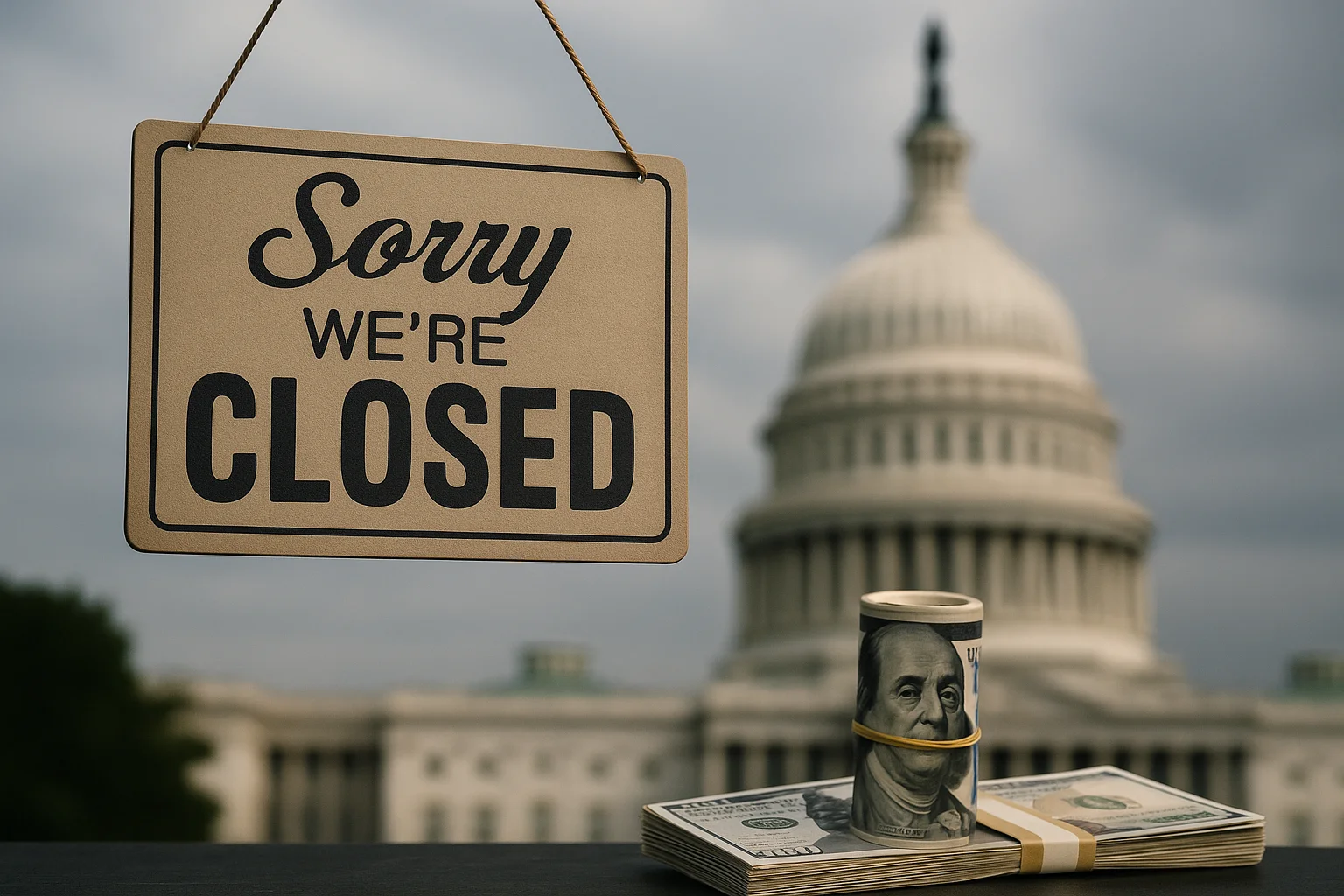
Bitcoin Drops Below $109,000: All Eyes on US Inflation Data
Bitcoin fell below $109,000 ahead of US inflation data, unsettling investors. The Personal Consumption Expenditures (PCE) price index, which the Fed closely monitors, is seen as particularly important in reshaping market expectations for interest rate cuts. According to a Reuters poll, the data is expected to rise 0.3 percent monthly and 2.7 percent annually in August. The results will be released at 3:30 PM Turkish time.Uncertainty surrounding the US Federal Reserve's (Fed) interest rate decision throughout the week significantly weakened risk appetite in crypto markets. The volatile atmosphere following the FOMC meeting increased selling pressure on Bitcoin. According to market data, BTC fell below $109,000 within 24 hours, approaching a 6 percent weekly loss. Ethereum and many altcoins are also closing out the week with double-digit declines. The situation on the ETF front has also dampened investor spirits. Spot Bitcoin ETFs in the US recorded net outflows of approximately $258 million on September 25th. BlackRock's iShares Bitcoin Trust was the only fund to see limited inflows. Spot Ether ETFs also experienced net outflows of approximately $251 million on the same day, marking the fourth consecutive day of outflows for these funds.The futures market also felt the brunt of this selling wave. According to CoinGlass data, approximately $1 billion worth of crypto positions were liquidated in the last 24 hours. More than 225,000 investors liquidated, with the largest single transaction being a $19.3 million ETH/USDT position. This development revealed that the market is undergoing a significant cleanup process due to leveraged trading.According to experts, Bitcoin broke through short-term support levels, falling to $108,652, before making a limited recovery. While BTC was still up around 4.5% in September, October has historically been a positive month for BTC. However, he points out that a clear recovery cannot be confirmed until the price breaks the $113,500–116,000 range with strong volume.How are investors acting?Meanwhile, on-chain data suggests that institutional and large investors are also on the sell side. Since August 21st, whales have been net sellers, while long-term investors have been focused on profit-taking. This situation is increasing pressure on the spot market, while the daily fluctuation of ETF inflows and outflows has left the market directionless.All eyes are now on PCE data. A deviation from expectations could alter the Fed's year-end interest rate policy expectations, which could set a new direction for risky assets. While analysts emphasize that long-term trends and seasonality remain positive for crypto, they emphasize that caution is more important in the short term than aggressive buying.With this situation, the crypto market is focused on new signals from both macro data and investor behavior. Unless consistent inflows, particularly from ETFs, are seen, it appears unlikely that Bitcoin will mount a strong recovery. The primary strategies for investors appear to be capital preservation and risk management.
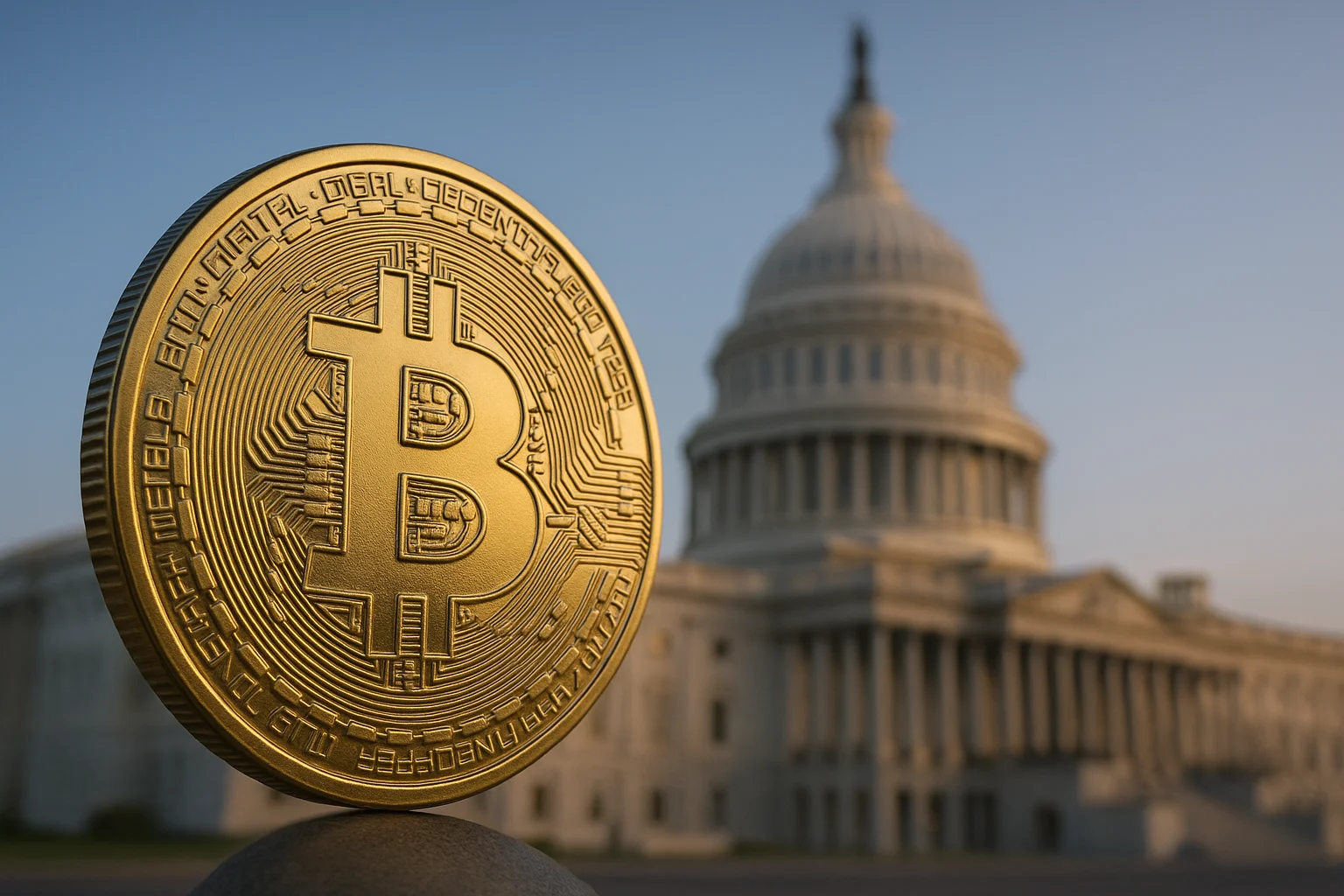
All Eyes on Trump and Powell After Billion-Dollar Crypto ETF Outflows
The crypto market is trading today under the shadow of critical announcements. While investors are focused on US Federal Reserve (Fed) Chair Jerome Powell's speech on the economic outlook, Bitcoin and Ether ETFs have seen billions of dollars in outflows. Statements from US President Donald Trump and Bitcoin lobbyist Dennis Porter are also increasing market tensions.Record Outflow in Bitcoin ETFsAccording to Farside Investors data, spot Bitcoin ETFs recorded a total net outflow of $363.1 million on September 23rd. This is the largest outflow in September. Fidelity's FBTC fund alone saw $276.7 million in outflows, while Ark 21Shares' ARKB withdrew $52.3 million and Grayscale's GBTC withdrew $24.6 million. VanEck's HODL fund also contributed to the outflow with $9.5 million. The drop in total assets below $150 billion is noteworthy. Ethereum ETFs also faced similar pressure. Spot Ether funds experienced $76 million in outflows, ending a two-day trend of inflows. Fidelity's FETH fund saw $33.1 million, Bitwise's ETHW, and BlackRock's ETHA products also saw significant outflows. It became clear that investors were reducing their positions in response to Powell's statements.Powell's message is criticalPowell's speech today at 6:30 PM GMT will include the new guidance markets have been waiting for following the Fed's 25 basis point rate cut at its September 2025 meeting. Powell emphasized last week that the cut was not a signal of aggressive easing but rather a "risk management" measure.Markets will now be watching to determine whether the Fed will remain cautious or open the door to further cuts. US 10-year Treasury yields are hovering around 4.15%, while the dollar index remains strong above 97. Gold, meanwhile, continues to rise amid safe-haven demand. JPMorgan CEO Jamie Dimon believes the Fed will not take any further action until inflation clearly declines.Trump and Porter Expect SurprisesThe first significant development of the day will be US President Donald Trump's speech at the UN General Assembly in New York at 4:50 PM Turkish time. Trump is expected to deliver messages about the ceasefires in the Middle East and the war in Ukraine. However, the crypto market is reportedly focusing on possible announcements regarding the US's plan to create a "Bitcoin reserve." Even a single suggestive statement from Trump on this matter could move the markets.In the final act of the day, Bitcoin lobbyist Dennis Porter will take the stage. Porter announced that he will make a "big announcement" at the X Spaces event, organized by the Satoshi Action Fund, at 2:45 AM Turkish time. There's speculation that this announcement could be related to a bill in the US that would elevate Bitcoin to strategic reserve asset status like gold, or the "CLARITY Act," which would limit the SEC's authority over Bitcoin ETFs. Porter describes this development as a "turning point" for Bitcoin in Washington.Market tensions highBitcoin is trading around $113,000 today, with a strong support line at $111,000. Ethereum is struggling to hold above $4,200. The Fear and Greed Index is at 40, in neutral territory. Opinions are divided among analysts; some interpret this decline as a signal of the end of the bull cycle, while others see the events as a classic "liquidity sell-off."

What Time Will the Fed's Rate Decision Be Announced? Here Are the Expectations and Latest on Bitcoin
The US Federal Reserve takes the stage today; the decision will be announced at 9:00 PM Turkish time. Markets are almost certain that Jerome Powell will announce the first interest rate cut of the year. Interest rates, which have been held steady since December 2024, could now be met with a downward move due to weakening employment data and increasing political pressure.The expectation is clear. Futures pricing assigns a 25 basis point cut a probability of over 90%, with a 50 basis point surprise being discussed in rare scenarios. Such a move would soften the narrative of dollar liquidity and support flows into assets like gold and Bitcoin. The reverse is also possible; if the Fed passes, the initial reaction could be a sharp sell-off, followed by the possibility of a larger emergency cut.The crypto market appears calm but alert ahead of the decision. The Bitcoin price is consolidating between $114,600 and $117,100 during the day, trading near the upper limit. On the on-chain side, the short-term investor cost remains above the reference bands, favoring sentiment. This chart indicates a squeeze that could react sharply to the news flow. According to experts, the critical threshold is $118,000–118,500. A break above this area with volume could strengthen momentum toward $120,000, opening the door to an all-time high from there. In short, the direction will depend on how 118,000 is tested.Gold is also in the picture. The price per ounce is just below $3,700, close to records. While profit-taking is evident in mining stocks, the resistance on the spot side aligns with the narrative of a rate cut. Depending on the Fed's tone, traffic across the two bridges could increase or briefly reverse.Let's clarify the scenarios: If the expected 25 basis points come in and guidance isn't neutral-hawkish, Bitcoin's gradual upward trend will be maintained, with occasional leverage-related wicks. A 50 basis point surprise could trigger an "initial euphoria, followed by news selling" pattern; if growth concerns prevail, some of the gains will be returned. If the price is passed as expected, crypto and gold will be hit first, followed by a recovery driven by the expectation of a larger price cut.It's worth remembering: A similar setup worked in September 2024. Initially, there was a shakeup, then an accelerating trend. Of course, past performance isn't guaranteed; what matters today is Powell's statements at the press conference around 9:30 PM, along with the 9:00 PM decision. Key phrases like "inflation progress," "labor market balancing," and "data dependence for further price cuts" could influence pricing for how many price cuts we'll see throughout the rest of the year.What are investors waiting for?Probabilities are clustered around three price cut paths in the CME FedWatch and crypto prediction markets. In summary, the 9:00 PM (UTC) anchor is critical. A 25 basis point and a softer tone could open the door for Bitcoin to push the 118,000 threshold; a clean breakout could bring 120,000 and the top zone into focus. In the event of a hawkish surprise or a lapse, the 116,800–114,500 and 113,300–110,000 corridors could serve as defensive lines.

Markets Hold Their Breath Ahead of Fed Decision: All Eyes on Powell for Bitcoin
The US Federal Reserve (Fed) is preparing for one of the most critical meetings of 2025. The interest rate decision, to be announced tomorrow, September 17th, is thought to open the door to the first interest rate cut of the year. According to CME FedWatch Tool data, markets have priced in a 96% probability of a 25 basis point cut. This suggests that the decision is largely anticipated, and markets are positioning accordingly. The Fed's September meeting will take place on September 16th and 17th. The critical interest rate decision will be announced on Tuesday, September 17th at 9:00 PM Turkish time. Markets are already fixated on this time; the press conference to be held by Jerome Powell following the decision will be the most important development that will shed light on the rest of the year.However, the most decisive factor will be the press conference held by Fed Chair Jerome Powell after the meeting. Powell's messages will provide clues about how monetary policy will be shaped for the rest of the year. Some economists argue that the Fed should act more aggressively and cut interest rates by 50 basis points. However, most analysts view this possibility as unlikely. Regardless of the outcome, one person is certain to be unhappy with this process: US President Donald Trump. Trump has long referred to Powell as "Too Late Jerome," criticized his slow pace on interest rate cuts, and even demanded his resignation. Citing the European Central Bank and the Bank of England's multiple rate cuts throughout the year, Trump accuses the Fed of delays.Optimism dominates Bitcoin and other marketsThe general market sentiment is optimistic for now. The S&P 500 index opened the week at record highs. This rise was driven not only by interest rate expectations but also by Elon Musk's $1 billion purchase of Tesla shares. On the crypto side, Bitcoin has rebounded after weeks of sideways movement. If the largest cryptocurrency can surpass its 30-day high of $118,595, an attempt to break above the historic record of $124,457 could be on the horizon. The psychological barrier of $5,000 also appears critical for Ethereum.However, experts also highlight the risks. The S&P 500 index has gained a remarkable 72 percent since the beginning of 2023. Some believe this momentum, fueled by investments in artificial intelligence, has overheated. The crypto market has seen a much sharper rise. Bitcoin has gained 600 percent in the last two and a half years, Ethereum 275 percent, and XRP 780 percent. Therefore, the possibility of a potential correction remains.Steve Sosnick, chief strategist at Interactive Brokers, stated that the Fed could signal a "hawkish interest rate cut" this week when announcing its decision. He noted that markets have largely priced in the reduction, but that future expectations could be tempered. According to him, even if the Fed implements the cut, it may want to dampen excessive optimism about the future. He noted that inflation remains uncontrolled, and that core CPI and PCE are rising again.New Development at FedA new development has occurred that will impact decision-making at the Fed. The Senate has approved Stephen Miran as the replacement for Adriana Kugler, who left office in August. Miran, who won a narrow 48-47 vote, will remain on the board until January 2026. It is known that Miran believes interest rate cuts are overdue, so this will strengthen his support for a reduction in decisions to be made this week. There are even speculations in the US press that Miran may eventually become a candidate to replace Powell as Fed chair.In short, the key factor in market direction will not only be the magnitude of the rate cut, but also the signals Powell delivers at his press conference. On the one hand, there is pressure from Trump and the election atmosphere, and on the other, overheated stock markets due to inflation concerns. The crypto market, once again, stands out as a "risky asset" in this equation. Investors will be keeping an eye on announcements from Washington this week.
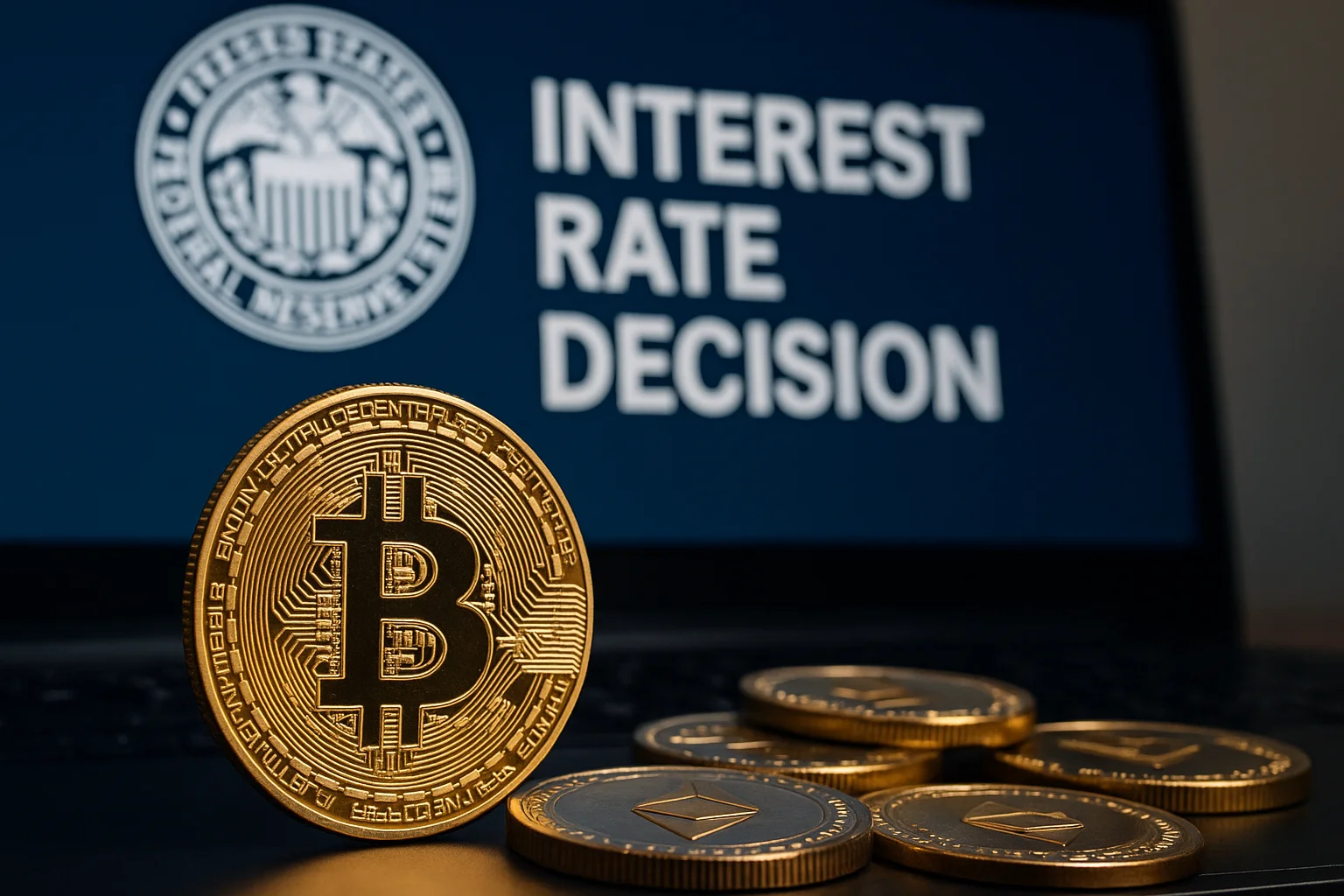
US Data Moves Crypto Markets: Bitcoin Gains Momentum
Critical nonfarm payrolls and unemployment data from the US have stimulated both traditional markets and the crypto ecosystem. The employment figures, which fell well below expectations, and the rise in the unemployment rate have investors focused on the Fed's interest rate decision, which will be announced in September.Employment data surprisesThe US Bureau of Labor Statistics (BLS) announced that nonfarm payrolls increased by only 22,000 in August. This figure fell well short of the market expectation of 75,000. The previous month's employment gain was 73,000. This result marked the second-lowest employment data since July 2021.Meanwhile, the unemployment rate was announced at 4.3%. While this figure was in line with expectations, it was above the 4.2% reported the previous month. Average hourly earnings, at 3.7%, came in slightly below expectations.This weak data release reinforced expectations that the Fed will cut interest rates in September. Analysts agree that the weakening labor market will make it difficult for the Fed to maintain its tight monetary policy.Criticism of the BLSShortly before the release of the labor force data, it was reported that the BLS was experiencing technical issues. Revisions made in recent months and inconsistencies in the released data have sparked debate about the agency's credibility. US Commerce Secretary Lutnick recently stated that "the BLS needs new management," adding to the criticism of the agency.Crypto markets gain momentumThese data, released at a time of intense macroeconomic uncertainty, have had a positive impact on the crypto markets. Bitcoin (BTC), in particular, strengthened from the $108,000 support level to test $113,000. At the time of writing, the BTC price is trading around $112,700. Ethereum (ETH) and many altcoins have also found support in Bitcoin's momentum. Analysts note that a Fed interest rate cut could trigger a broader upward trend in crypto markets. A low interest rate environment could trigger increased capital flows into cryptocurrencies by increasing demand for risky assets.The September Effect and Fed ExpectationsHistorically, September is known for its bearish trend in crypto markets. However, this year's scenario could be different. A Fed rate cut signal could disrupt the traditional "September nightmare" in the market.Fed Chair Jerome Powell highlighted the weakening labor market in his Jackson Hole meeting last month. The figures released today confirm the risks Powell highlighted, making the possibility of a rate cut at the September meeting virtually certain.
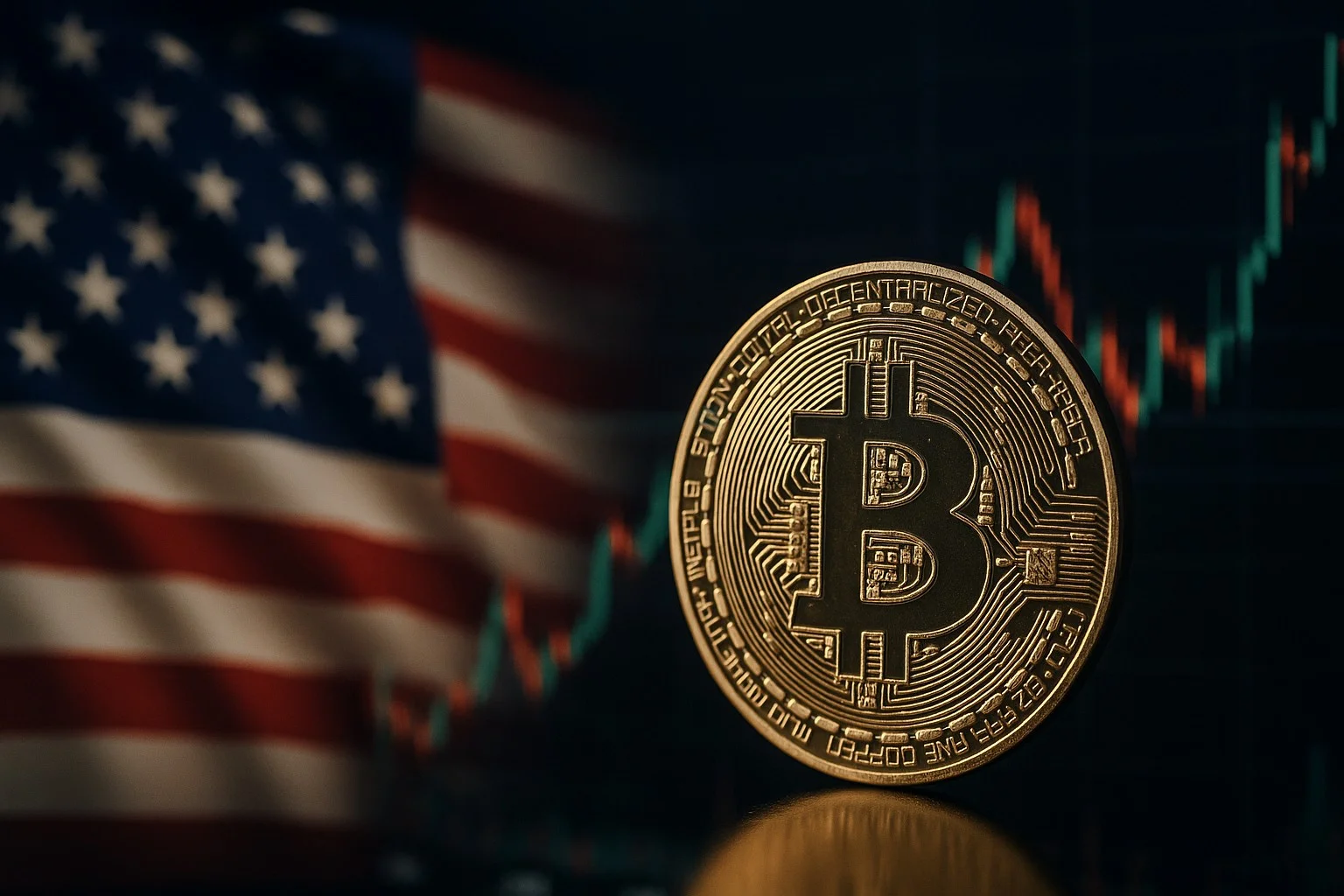
Fed Expectations Ahead of ADP Employment Data: What Does It Mean for Cryptos?
All eyes are on the US labor market this week. The ADP Employment Change report, which measures private sector employment, is expected to show that 68,000 new jobs were created in August. The data, to be released on Thursday, could directly impact not only the employment landscape but also the interest rate decision of the Federal Reserve (Fed), the US central bank. The data is expected to be released around 3:30 PM Turkish time.A critical threshold after July's shockWeak nonfarm payrolls (NFP) data released in July shook markets, sharply depressing the dollar and raising questions about the Fed's ability to maintain its tight monetary policy. The unexpected decline even led to the dismissal of a senior official at the Department of Labor. Therefore, investors will be more sensitive to the ADP's projections.Expectations point to a job gain of only 68,000 in August, following a 104,000 increase in July. This downward trend could reinforce signs of a cooling in the US economy.Fed and Trump PressureThis data will be the final employment report before the FOMC meeting on September 16-17. Chairman Jerome Powell had signaled that inflation is relatively easing and the impact of trade tariffs will be limited. This has increased the likelihood of a rate cut.Meanwhile, President Donald Trump continues to harshly criticize the Fed for cutting interest rates more rapidly. According to data from the CME Group's Fed Watch Tool, markets are pricing in a 25 basis point rate cut in September at over 90%. A second cut before the end of the year is also a possibility.If the ADP data falls short of expectations, the Fed could consider a more aggressive rate cut. In this scenario, selling pressure on the US dollar could intensify. Conversely, while stronger-than-expected data may support the dollar in the short term, it appears unlikely the Fed will change its policy direction on its own. Markets will be determined by the nonfarm payrolls (NFP) data, to be released on Friday.How might cryptocurrencies be affected? Labor market data is also indirectly critical for cryptocurrency markets. A Fed interest rate cut could suppress the value of the dollar and increase the appetite for risky assets. This could strengthen liquidity flows in cryptocurrencies, particularly Bitcoin and Ethereum. However, very weak data could increase concerns about an economic slowdown and reduce risk appetite. In such a scenario, crypto markets could also be negatively affected by volatility.Ultimately, the ADP report will shape both the Fed's short-term roadmap and global market risk appetite. On the crypto side, the impact will be felt not directly, but through the dollar's course and investor psychology.
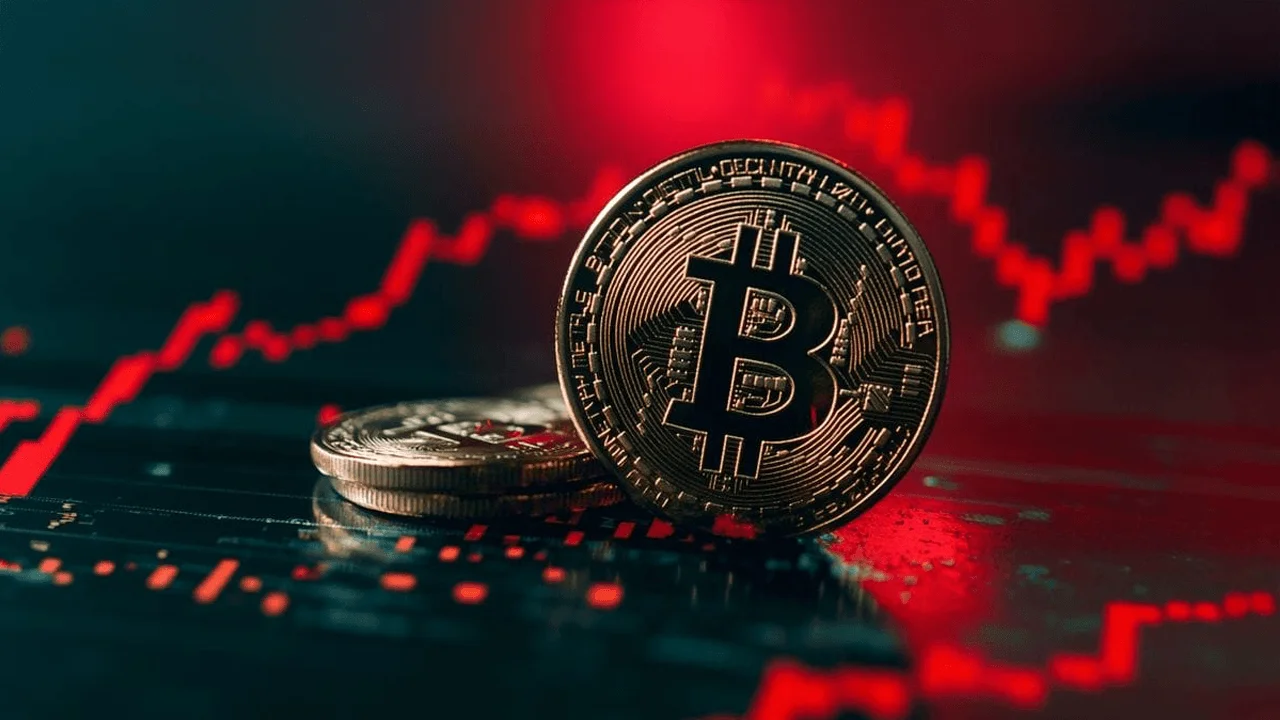
Fed's Agenda: Stablecoin, DeFi, and Artificial Intelligence: All Eyes on That Date
The US Federal Reserve announced that it will hold a major conference on October 21, 2025, to discuss the role of innovation and emerging technologies in payment systems. This Fed event will address critical topics for both traditional finance and the crypto ecosystem: stablecoins, decentralized finance (DeFi), tokenization, and the integration of artificial intelligence into payment infrastructure. Conference Main AgendasAccording to the Fed's statement, the conference will specifically address how to make payment systems more secure, faster, and more efficient. Fed Governor Christopher Waller emphasized that innovation is essential to meeting changing customer and business needs. Waller said, "I look forward to examining the opportunities and challenges of new technologies, bringing together ideas that will enhance the security and efficiency of payments, and hearing directly from those shaping the future." Panel discussions to be highlighted at the event include:The convergence of traditional finance and DeFi modelsStablecoin use casesArtificial intelligence applications in payment systemsTokenization of financial products and servicesAnother topic on the Fed's conference agenda is the potential impact of stablecoin reserves on the banking system. Previously released Federal Open Market Committee (FOMC) minutes indicated that dollar-denominated stablecoins could increase payment efficiency but also introduce regulatory requirements for the banking sector.Trump-era policies and the Fed's new directionThis move by the Fed is being interpreted as a sign of a more flexible approach to crypto assets in the US. Steps taken during the Trump administration, in particular, paved the way for the central bank to develop a more open perspective on the crypto and stablecoin markets.In April, the Fed withdrew previous guidance that made it difficult for banks to offer crypto asset services and terminated its special oversight program for banks dealing in digital assets. This development was also seen as the end of "crypto debanking" practices, which had long been a source of complaints in the industry.Furthermore, the GENIUS Act, enacted in July, established a comprehensive federal regulatory framework for stablecoins. This law increased the auditability of stablecoins and paved the way for their wider use in the financial system.Christopher Waller is one of the most prominent figures in this process. Appointed to the Fed by Trump, Waller describes blockchain-based financial infrastructures as a "technological evolution." In his speech at the Wyoming Blockchain Symposium, he compared DeFi transactions to credit card transactions and argued that smart contracts and distributed ledgers are a natural evolution for the financial system.Strategic Move for the Dollar's Global Reserve Currency StatusThe Fed's strong emphasis on payments innovation is also motivated by its motivation to protect the US dollar's global reserve currency status. The BRICS countries' search for alternative reserve currencies and the growing demand for gold threaten the dollar's position. Stablecoins' ability to facilitate rapid global transfers is seen as a critical tool for maintaining the dollar's effectiveness.Waller emphasized that stablecoins facilitate access to the dollar, particularly in economies experiencing high inflation and limited access to banking services. He argues that stablecoins could further expand the dollar's global use by increasing its 24/7 availability.
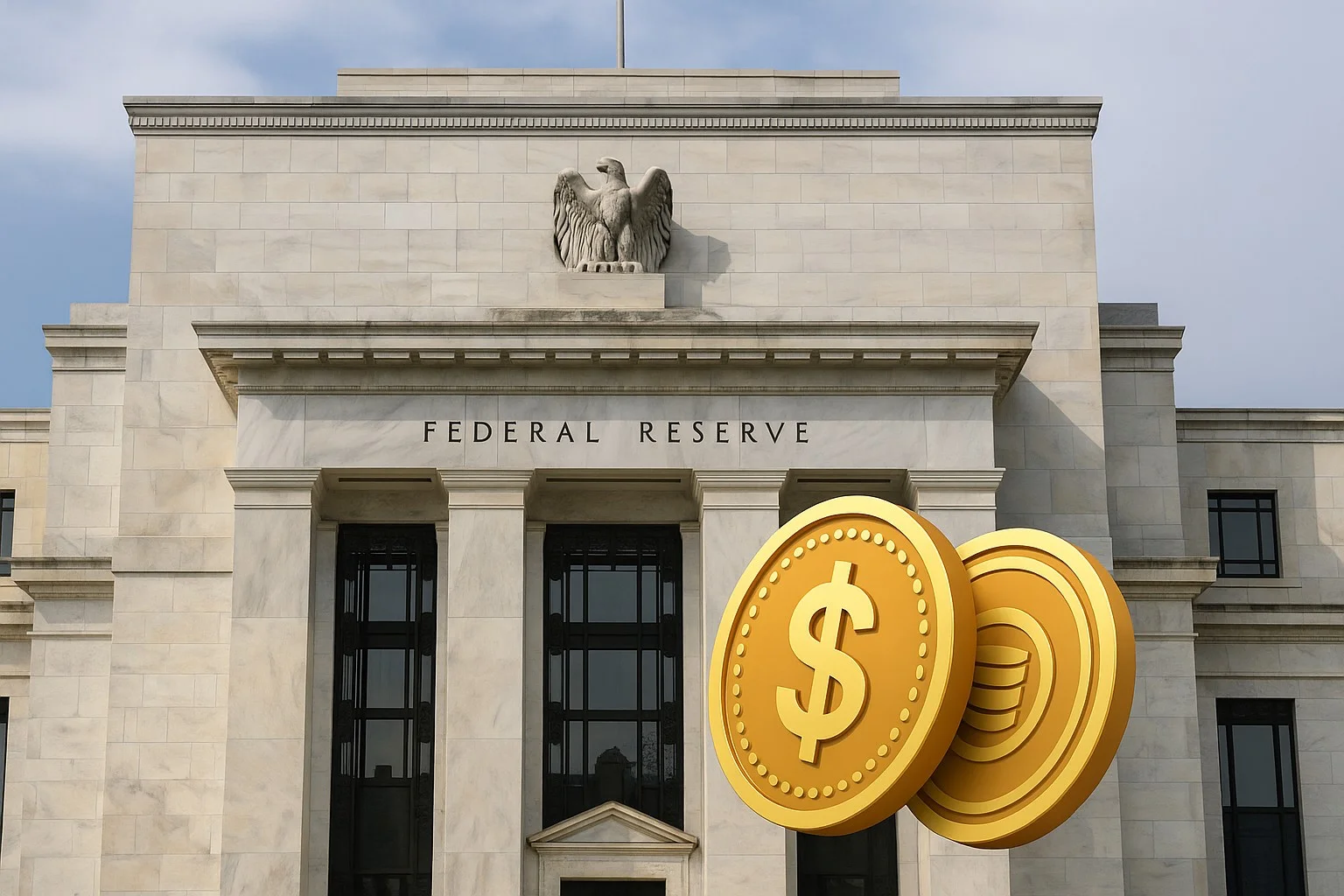
US Congress Focuses on Crypto Regulation: Legislation Expected by Year's End
The US Congress has returned from recess, and the long-awaited "market structure" regulations for the cryptocurrency market have taken center stage. According to Eleanor Terrett, a journalist who closely follows crypto regulations, the Senate Banking Committee is expected to begin formal deliberations on the current draft by the end of September, while the Senate Agriculture Committee is preparing to release its own draft, encompassing the CFTC's jurisdiction, soon.Could be enacted by the end of the yearWyoming Senator Cynthia Lummis, known for her pro-crypto stance, stated at the Wyoming Blockchain Symposium last month that she expects the market structure bill to be signed into law by President Donald Trump before Christmas. Lummis's prediction reinforced expectations that regulation will accelerate in the sector.During the Senate's summer preparation process, the draft text was revised based on feedback from more than 100 stakeholders. Among the key areas of discussion are the protection of software developers (Section 1960) and the clarification of the distinction between "byproduct assets" and "digital commodities." Trump Administration Takes Debanking ActionMeanwhile, the Trump administration has issued a harsh response to the "debanking" practices that have long been a source of controversy in the financial sector. The Small Business Administration (SBA) has ordered banks to reinstate customers who were illegally cut off and to correct related policies by December 5th.SBA Administrator Kelly Loeffler stated that many institutions, including religious institutions and pro-life groups, are being arbitrarily denied banking services, saying, "This type of discrimination will no longer be tolerated."According to industry sources, the SBA is considering revoking the status of some banks. This action could have devastating consequences for the institutions involved.CFPB BacktracksThe Trump administration's actions were not limited to the SBA. The Consumer Financial Protection Bureau (CFPB) formally apologized for the oppressive practices against Credova, a "buy now, pay later" platform, during the Biden administration. CFPB General Counsel Mark Paoletta described these practices as "one of the most blatant examples of abuse of state power."Paoletta admitted that the agency targeted Credova with methods similar to Operation Choke Point during the Biden administration.As Congress prepares to take concrete steps for the crypto market, both clarification of the regulatory framework and measures taken against arbitrary practices in the financial sector are critical for the sector. Investors expect the regulations, which will be introduced by the end of the summer, to reduce market uncertainty and provide a long-term roadmap, particularly for US-based companies.

Markets Count Down to Fed Cut: Bitcoin Responds Immediately to Data
Bitcoin (BTC), the leading cryptocurrency, broke a record high in mid-August, surpassing $124,000. However, following this surge, the market has refocused on macroeconomic developments. The US Federal Reserve's (Fed) interest rate policies and released economic data, in particular, play a significant role in determining price action. According to the latest data, Bitcoin is currently trading at $109,782.62 and has declined 2.46% in the last 24 hours. Fed rate cut expectations postponed until SeptemberAfter the interest rate cuts expected in June and July failed to materialize, attention shifted to September. Fed Chair Jerome Powell recently offered mild signals regarding monetary policy at his Jackson Hole meeting. Powell emphasized that the balance of risks has shifted and suggested that the current restrictive stance may require adjustments in the future. This statement has strengthened the market's interest rate cut prospects.Indeed, futures expectations have also become clearer. Markets are pricing in an 85% probability of a Fed rate cut in September. This expectation is also seen as supporting risk appetite in cryptocurrency markets.PCE data came in line with expectationsThe Personal Consumption Expenditures (PCE) price index, known as the inflation indicator most closely followed by the Fed in its monetary policy decisions, was released for July.Core PCE (Annual): 2.9% (expected 2.9%, previous 2.8%)Core PCE (Monthly): 0.3% (expected 0.3%, previous 0.3%)PCE Price Index (Annual): 2.6% (expected 2.6%, previous 2.6%)PCE Price Index (Monthly): 0.2% (expected 0.2%, previous 0.3%)The data came in line with expectations, indicating that inflation in the US is progressing in a controlled manner. The fact that annual core inflation remained stable at 2.9% is a development to be closely monitored by the Fed. Consumption and incomes on the risePCE data reflects not only price movements but also trends in consumption and income. Nominal personal consumption increased by 0.5% in July, accelerating compared to the previous month. Real personal consumption expenditures also rose by 0.3%. This suggests that American consumers continue to increase their spending despite inflation.Meanwhile, personal income increased by 0.4% in real terms. This figure supports consumption trends and could influence the Fed's decisions. However, the widening trade deficit to $103.6 billion in July signaled weakness in other areas of the economy.What's next for Bitcoin?Losses in short-term interest rate futures contracts eased following the release of macroeconomic data. Investors are focused on the possibility of a September interest rate cut. This development could keep interest in risky assets alive. However, Bitcoin's decline below $110,000 in the short term suggests investor caution.
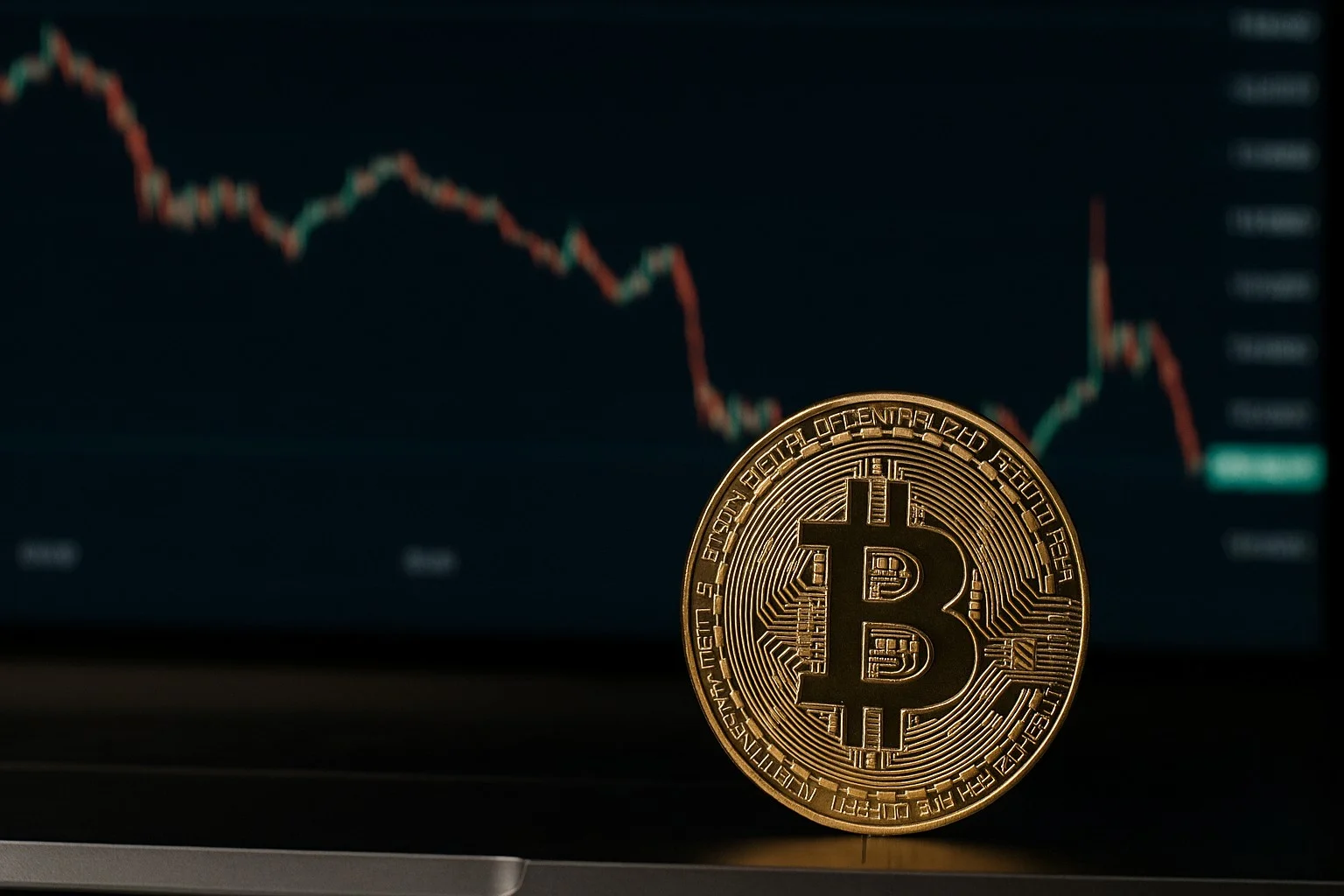
Trump Administration Considers 11 Candidates for Fed Chair: Which Ones Are Crypto-Friendly?
As US Federal Reserve (Fed) Chair Jerome Powell's term ends in May, the Trump administration has considered at least 11 strong candidates for the new chairman. What's striking is that some of these candidates have a positive outlook on cryptocurrencies. Markets are interpreting this development as a harbinger of significant changes in both interest rate policies and regulatory frameworks for crypto assets.Strong Candidates for Powell's SeatUS Treasury Secretary Scott Bessent announced on Fox News that they have identified 11 "very strong candidates" and will begin narrowing down the list next month. According to CNBC's August 13 report, the list includes Dallas Fed President Lorie Logan, former St. Louis Fed President James Bullard, Fed Vice President Philip Jefferson, Fed Governor Chris Waller, Fed Deputy Chairman of Supervision Michelle Bowman, and former Fed Governor Larry Lindsey. Among the candidates are Bush-era economic advisor Marc Sumerlin, investment bank Jefferies' chief market strategist David Zervos, and BlackRock's global fixed-income securities investment director Rick Rieder.Candidates with a Positive Approach to CryptoAmong the most notable candidates from a crypto perspective are Rick Rieder of BlackRock, Fed Governor Chris Waller, and Fed Deputy Chair of Oversight Michelle Bowman.Rieder has stated on various platforms since 2020 that Bitcoin is "here to stay," and in 2024, he told the Wall Street Journal that Bitcoin could eventually play a significant role in investment portfolios. The fact that BlackRock already holds the largest Bitcoin and Ethereum ETFs further supports this claim.Bowman, in August, argued that Fed employees should be able to invest small amounts in crypto to gain a grasp of the technology. He expressed the view that this step would contribute to a better understanding of crypto among central bank staff. Waller, however, emphasized that there should be no fear of crypto payments operating outside the banking system, emphasizing that it is merely a new "technology."Powell's View on Cryptocurrency is More CautiousCurrent Chairman Jerome Powell has made limited statements on cryptocurrencies to date. While Powell acknowledged in a speech in June that crypto assets are becoming increasingly mainstream, he is generally known for his cautious approach. In December, he stated that he sees Bitcoin as a competitor to gold, not the US dollar.Jefferies' Crypto ConnectionsJefferies, the investment bank where candidate David Zervos works, also stands out for its close ties to crypto. The bank supported the IPOs of crypto-focused companies such as eToro, Circle, Bullish, and Figure. It also provided early financing for Michael Saylor's Bitcoin purchases.While Powell's term as Fed chairman ends in May, his term on the board will last until 2028. However, Trump's choice of candidate is critical for markets. The Fed's interest rate decisions directly impact market liquidity and risk appetite. Lower interest rates generally increase interest rates toward riskier assets (especially cryptocurrencies), while interest rate hikes drive investors toward safe havens.With Trump's announcement of the new president, there is talk of potential for significant volatility in both the US financial markets and the crypto ecosystem.

Trump Declares War on Fed: Lisa Cook Crisis Shakes Markets
US President Donald Trump announced earlier this week that he had dismissed Lisa Cook, a member of the Federal Reserve (Fed) Board of Governors. In the White House announcement, Trump cited allegations that Cook forged documents in a mortgage application. However, it is clear that Cook has not faced any charges, has not appeared in court, and there is no final decision.Cook, in a statement through his attorney, Abbe David Lowell, denied the decision, saying, "Trump has no legal basis to remove me." Cook, who has served on the Fed since 2022 and was reappointed to a full term in 2023, will actually serve until January 2038. Cook's team has declared Trump's decision "illegal" and announced that they will file a lawsuit.Legal Basis DebateTrump is citing a provision in the Fed's charter that grants the president the right to remove a member "for cause." According to him, the mortgage fraud allegation is sufficient for this "justification." However, legal experts disagree. No president has ever attempted to dismiss a Fed member in this manner. Experts say Trump's move will be tested in court, and if it prevails, it could pave the way for similar dismissals of other Fed members.Trump has long targeted the Fed, demanding a looser monetary policy stance. Last week, Fed Chair Jerome Powell's statement opening the door to a rate cut led to speculation that Trump's pressure was effective. Now, there is talk of replacing Lisa Cook with more "dovish" figures close to Trump.The crisis has also reverberated through the markets. IG analyst Tony Sycamore said, "Trump's dismissal of Cook, following the pressure on Powell, has once again brought the Fed's independence into question. This undermines the impartiality of monetary policy." Christopher Wong of OCBC commented, “The pressure on the dollar stems from concerns that the Fed will not be able to act independently of political interference.”Bitcoin and the dollar reactTrump's statements triggered volatility not only in the dollar but also in crypto markets. Bitcoin faced rapid selling pressure in the Asian and European sessions following the news. The price of BTC fell to $108,666 overnight. Currently, Bitcoin is trading at $109,653. The daily loss is approximately 0.4%, with a 24-hour trading range of $109,214 to $112,815. According to market commentators, questions about the Fed's independence are weakening the dollar's credibility. While this may create volatility in the price of Bitcoin in the short term, it could encourage investors to turn to "hard assets" like gold and Bitcoin in the long term.
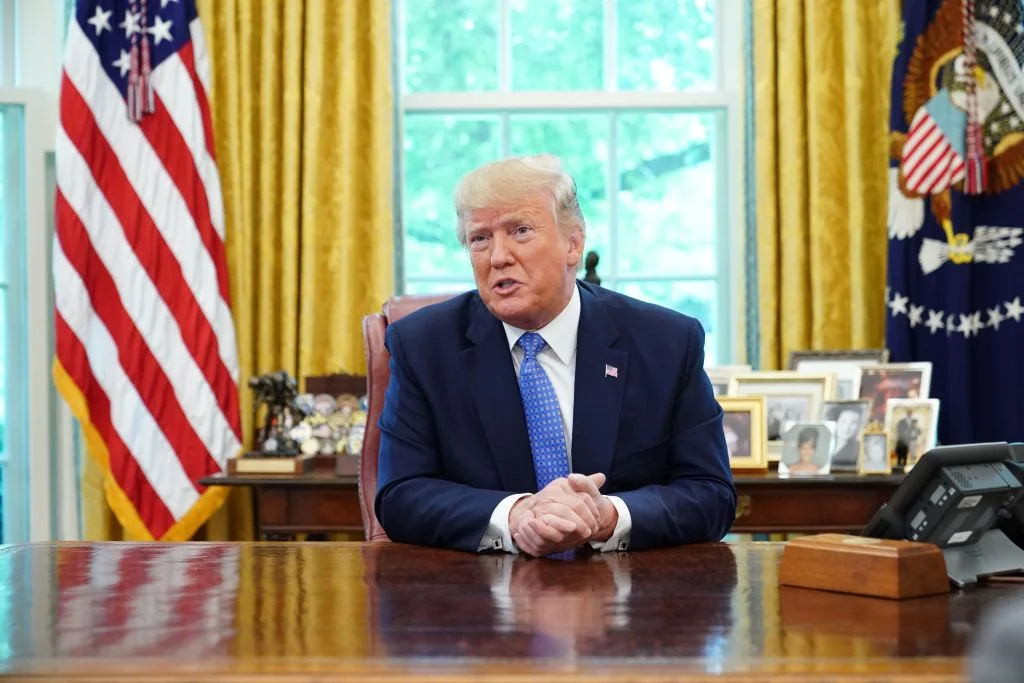
What Time Is Powell's Jackson Hole Meeting? Crypto Markets Hold Their Breath
Global markets are focused on US Federal Reserve (Fed) Chair Jerome Powell's speech today at the Jackson Hole Economic Policy Symposium. The annual event in Wyoming is dubbed the "Oscars of monetary policy." This year's gathering holds a special significance: Powell will be on the Jackson Hole stage for the last time, as his term ends in May 2026.Markets fixated on the 5:00 PM messagePowell's speech will begin at 5:00 PM Turkish time. While the main theme of the symposium is "Labor Markets in Transition," all eyes will be on the Fed's monetary policy signals. The possibility of a rate cut at the FOMC meeting in September is particularly central to market pricing. According to the CME FedWatch Tool, there is currently a greater than 73% chance of a 0.25 percentage point cut.Within the Fed, disagreements persist. While Cleveland Fed President Beth Hammack and Kansas City Fed President Jeffrey Schmid remain cautious, Governors Michelle Bowman and Christopher Waller are more dovish in favor of rate cuts.A Speech That Will Define Powell's LegacyJackson Hole is known as a platform where Fed chairs deliver historic messages. Powell's dovish statements in 2021 reassured markets and sparked a major rally in Bitcoin. His 2022 speech, a year later, took a sternly hawkish tone, triggering a sell-off in stocks and cryptocurrencies. While the 2023 speech was met with mixed reactions, expectations for 2025 are much higher: This speech is thought to define Powell's legacy.Economists say Powell could signal not only the rate cut process but also the Fed's long-term framework. In particular, the official end of the "average inflation targeting" policy, adopted in 2020 and allowing inflation to occasionally exceed its 2% target, is on the agenda. Such a move could signal a return to tighter inflation targeting by the Fed.Powell's speech also comes at a time of increasing political pressure. US President Donald Trump has been criticizing Powell for months for not cutting interest rates and calling for his resignation. The Trump administration's actions, which have cast doubt on central bank independence, are leading to increased scrutiny of the Fed's decisions. This situation is compounded by macroeconomic uncertainties: weak employment data, mixed inflation indicators, geopolitical risks, and political pressures within the US are making investors nervous.A double-edged scenario for crypto marketsPowell's Jackson Hole message is critical not only for Wall Street but also for crypto markets. Bitcoin is currently trading around $113,000. According to analysts, Powell's dovish tone could provide Bitcoin with a new "growth stimulus." Some commentators even believe a "Bitcoin Supercycle" scenario similar to 2021 could be triggered again. Conversely, hawkish messages could dampen investor risk appetite, increasing selling pressure on both stocks and crypto assets. Nic Puckrin of Coin Bureau offers a cautious perspective, saying, "It's not crypto-specific issues that are dragging markets down, but macroeconomic uncertainty."
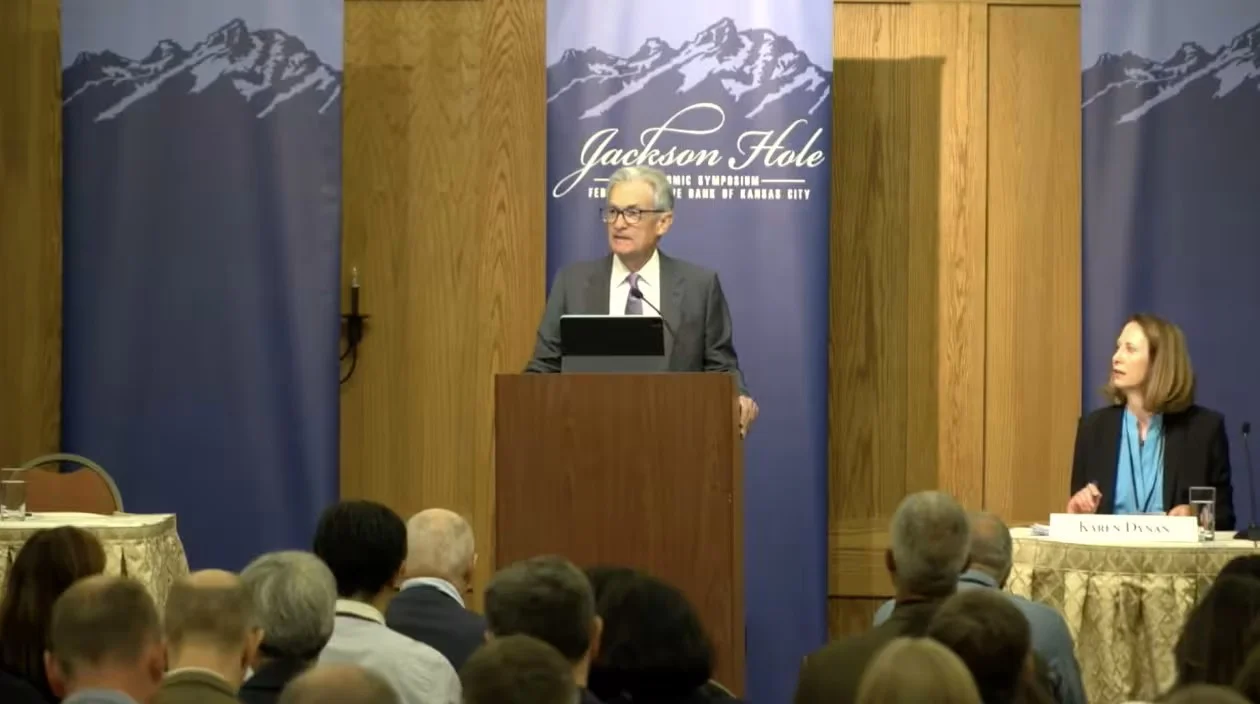
Fed Officials' Interest Rate Statements Before Jackson Hole
Monetary policy discussions surrounding the US Federal Reserve (Fed) and uncertainties ahead of the Jackson Hole Symposium have caused volatility in both traditional markets and cryptocurrencies. The statements made on August 21st have investors focused on Fed Chair Jerome Powell's speech on Friday.Fed's target: inflation againThe latest statement from the Boston Fed emphasized that the US inflation rate is still well above its 2% target. The bank stated that it is committed to bringing inflation back to this level and that current monetary policy will be maintained accordingly. These statements temporarily dampened market expectations of a rate cut.Despite this, the comments of former St. Louis Fed President James Bullard attracted attention. Bullard stated that he believes the Fed will cut interest rates in September. He also stated that he has held discussions with US Treasury Secretary Janet Yellen regarding the Fed chairmanship. Bullard stated that current interest rates are high and that a 100 basis point cut by 2026 could be on the agenda. What do market expectations and FedWatch data indicate?According to the CME's "FedWatch" tool, the probability of interest rates remaining unchanged in September is measured at only 20.9%. In contrast, the probability of a 25 basis point rate cut stands at 79.1%. This suggests that the general market expectation is for interest rates to soften. The minutes from the Fed's July meeting revealed that policymakers' concerns about high inflation outweighed concerns about a slowdown in the labor market. This led to a slight strengthening of the dollar. However, analysts note that the July data is outdated and markets are primarily focused on Powell's Jackson Hole speech.Sharp Volatility in Crypto MarketsMacro uncertainties also had a strong impact on the crypto market. Bitcoin fell below $113,000 intraday on August 21st, falling to $112,800. Although it recovered from this level, volatility worried investors. According to market data, more than $500 million in leveraged positions were liquidated. Overly leveraged long positions, in particular, accelerated the decline.Spot Bitcoin and Ethereum ETFs traded in the US have also experienced four consecutive days of gains. According to data from Bloomberg, total investor outflows reached $1.9 billion. This highlights the weakening of risk appetite ahead of Powell's message.The Importance of the Jackson Hole SpeechMarkets are now fixated on Powell's messages at Jackson Hole. A dovish tone, meaning one that highlights growth risks and supports interest rate cut expectations, could generate renewed upward momentum in crypto assets. However, a hawkish tone, coupled with a firmer stance against high inflation, could deepen the decline in the value of risky assets.Technical levels are also being closely monitored for Bitcoin. According to analysts, $110,000 represents psychological support, $115,000 represents short-term stability, and $120,000 represents resistance. These levels could be decisive in determining the market's direction following Powell's speech.In summary, both the Fed's commitment to inflation and Powell's speech in Jackson Hole signal a critical period for crypto markets in the coming days. Investors are closely watching to see how the balance shifts between the strengthening dollar and interest rate cut expectations.
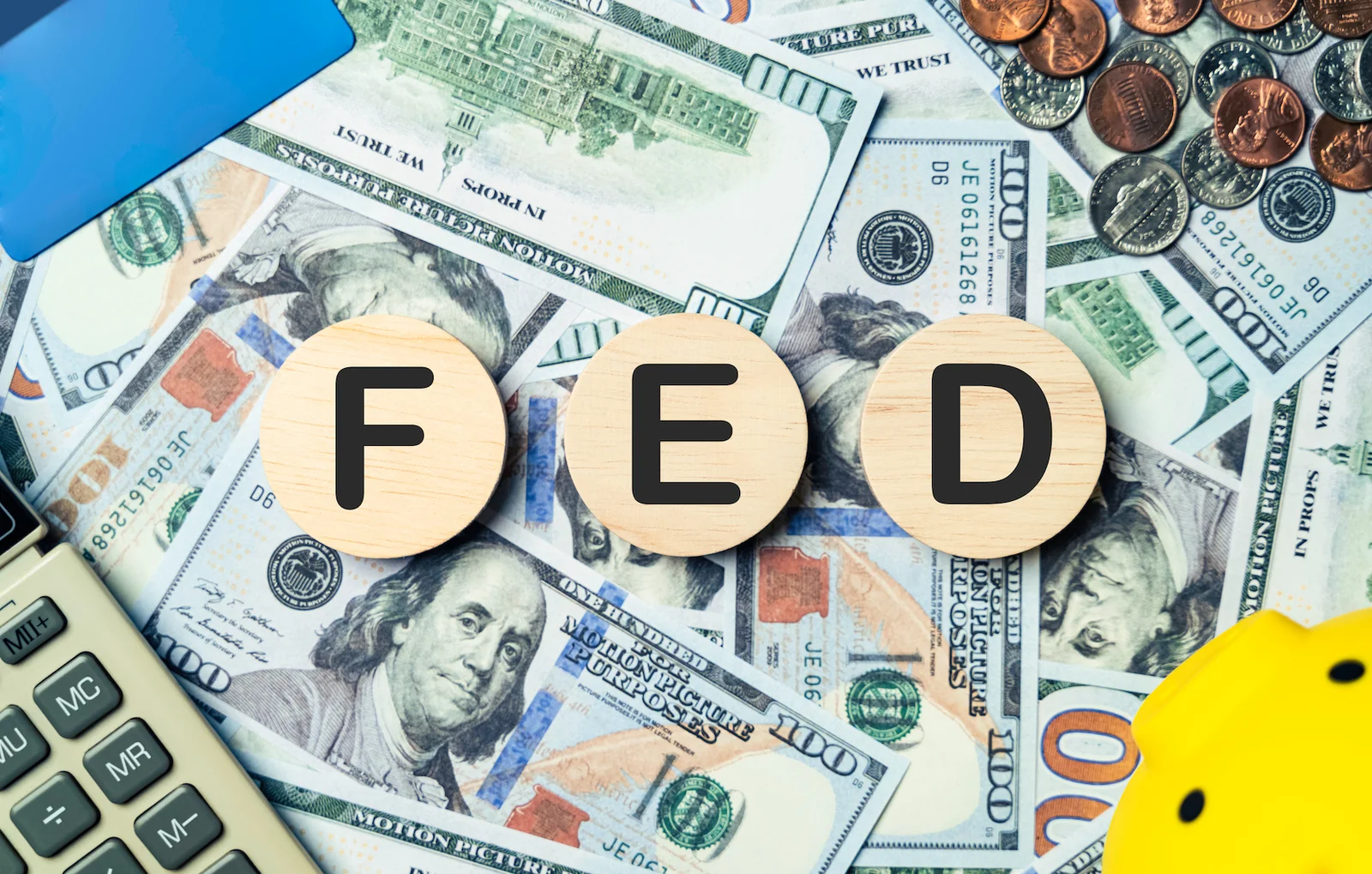
Daily Market Summary – August 20, 2025 | JrKripto
You can find today’s edition of “Daily Market with JrKripto” below, featuring a roundup of the most important developments from both global and local markets. Let’s analyze the broader market sentiment and latest insights together.Bitcoin and Ethereum Technical OverviewBitcoin has been on a downward correction for some time, falling to the $113,000 region. It's safe to say it found short-term support in this region, but in a downward breakout scenario from the $112,000-$113,000 area, the $111,800 level and then the $107,300 support level are potential price reversal levels. It's worth noting that the $117,300 area is the target target after the recovery.On the Ethereum side, after a breathless rise to the $4,800 region, we see it's undergoing a natural pullback. The $4,050, $3,980, and $3,870 levels serve as sequential support levels. The $4,400 area will be the price's first target upon reversal.Crypto NewsThe U.S. Treasury Department has begun gathering public input on the GENIUS Act, which aims to detect illicit digital asset activity. Tether appointed former White House Crypto Council Executive Director Bo Hines as Strategic Advisor for Digital Assets and US Strategy.Robinhood US to list #SUITrump: Europeans want to end the war with Ukraine and Russia.KindlyMD purchased $5,744 BTC to expand Nakamoto's Bitcoin treasury.SharpLink purchased 143,593 ETH at approximately $4,648, bringing its total holdings to 740,760 ETH.SEC Chairman Paul Atkins will discuss the 'Crypto Project' at the WYOMING Blockchain Symposium today.Fed member Bowman: Fed employees should be allowed to own small amounts of crypto assets.CryptocurrenciesTop GainersM → Up 16.8% to $0.43772063CTC → Up 9.6% to $0.74369425GRASS → Up 8.9% to $0.78576644PUMP → Up 5.4% to $0.00300329HNT → Up 5.3% to $2.68Top LosersSNEK → Down 13.3% to $0.00450101TRIBE → Down 9.9% to $0.59775806ZORA → Down 9.2% to $0.09269117REKT → Down 8.6% to $0.07659167ADA → Down 8.5% to $0.84855968.Fear IndexBitcoin: 50 (Neutral)Ethereum: 49 (Neutral)DominanceBitcoin: 59.87% ▼ 0.36%Ethereum: 13.32% ▲ 1.28%Total Daily Net ETF InflowsBTC ETFs: -$523.30 MillionETH ERFs: -$422.20 MillionGlobal Markets and Stocks of the Most Valuable CompaniesTechnology companies in the US have surged significantly in recent months, but warnings are now coming that these levels are risky. As expectations for a Fed interest rate cut weakened, tech stocks began selling off, and all US stock markets declined. Expectations that the Russia-Ukraine talks will be prolonged further exacerbated these declines. US, European, and Asian stock markets were generally negative this morning. While positive talks between Trump, Zelenskyy, and EU leaders yesterday supported European stock markets, the impact of the US sell-off is dampening global risk appetite. The Fed meeting minutes will be released today, and inflation data from the UK, Germany, and the Eurozone will be closely monitored.NVIDIA (NVDA) → $4.29 trillion market capitalization, $175.64 per share, fell 3.50%.Microsoft (MSFT) → $3.79 trillion market capitalization, $509.77 per share, fell 1.42%.Apple (AAPL) → $3.42 trillion market capitalization, $230.56 per share, fell 0.14%.Alphabet (GOOG) → $2.44 trillion market capitalization, $202.49 per share, fell 0.88%. Amazon.com (AMZN) → $2.43 trillion market capitalization, $228.01 per share, fell 1.50%.Borsa Istanbul Updates and Most Valuable CompaniesAccording to data released by TÜİK (Turkish Statistical Institute), the unemployment rate rose to 8.6% quarterly. The idle labor force reached a record high of 32%. While employment decreased in industry and agriculture, services and construction saw increases. Turkey's net foreign investment position was -$329.4 billion in June. The BIST-100 index closed positive for the third consecutive day with a limited increase, but failed to surpass the 11,000 level. Trading volume reached its highest level in recent years. Food retailers were negatively impacted, while automotive and iron/steel sectors stood out. The US decision to increase tariffs on iron/steel and aluminum is dampening global risk appetite. Markets are also awaiting the Fed Chair's announcements on Friday. The BIST is expected to remain tight. QNB Finansbank (QNBTR) → Market capitalization of 2.39 trillion TL, price per share of 714.50 TL, decreased by 9.96%.Aselsan Elektronik Sanayi (ASELS) → Market capitalization of 786.14 billion TL, price per share of 177.20 TL, increased by 2.78%.Türkiye Garanti Bankası (GARAN) → Market capitalization of 600.60 billion TL, price per share of 144.40 TL, increased by 0.98%.Turkish Airlines (THYAO) → Market capitalization of 467.13 billion TL, price per share of 338.50 TL, changed by 0.00%.Koç Holding (KCHOL) → Market capitalization of 454.69 billion TL, price per share of 179.70 TL, increased by 0.22%.Precious Metals and Currency PricesGold: 4,363 TLSilver: 48.93 TLPlatinum: 1738 TLDollar: 40.92 TLEuro: 47.63 TLWe look forward to bringing you the latest updates again tomorrow.
